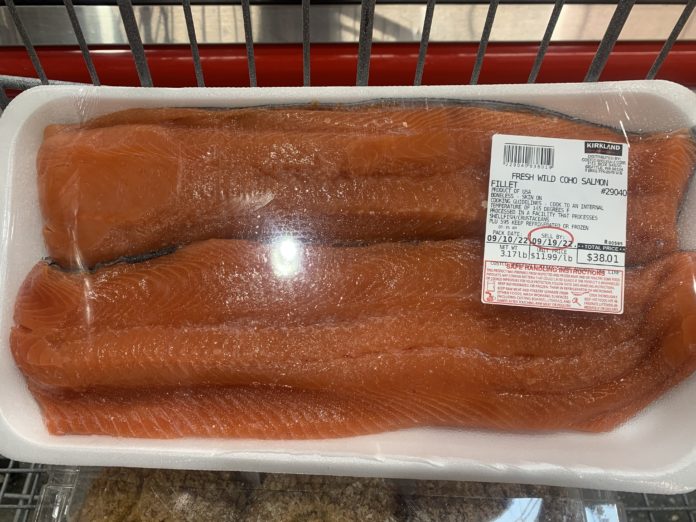
Opportunity for commercial salmon harvests in 2022 is winding down rapidly, as state fisheries biologists in Cordova wait for survey results to see if any additional fishing for gillnetters in the Copper and Bering rivers should be authorized.
Gillnet fisheries across the board came in below forecast, and the pink salmon seine fisheries, which started out well, never really materialized during the second half of the season.
The coho salmon run appeared to be coming in low compared to the forecast, said Jeremy Botz, gillnet management biologist in Cordova for the Alaska Department of Fish and Game.
The weak run of cohos likely was linked to the drought in 2019, with low water tables and warmer than average water temperatures, Botz said.
The sockeye run was better than in 2020 and 2021, but it was still below average, with the fish bigger but not by much, he said.
The humpy forecast wasn’t very good to begin with, and it came in well below that forecast, said Heather Scannell, seine management biologist in Cordova for ADF&G.
On the bright side, retail demand for wild Alaska salmon remains strong and prices in the Anchorage area are about $11.99 a pound for both sockeyes and coho salmon.
Preliminary harvest results posted on Tuesday, Sept. 13, by ADF&G showed the unofficial harvest for Prince William Sound to include 26.8 million humpies, 2.8 million chums, 1.6 million sockeyes, 62,000 cohos and 10,000 king salmon, for a total of 31.2 million fish, in 20,728 deliveries to processors.
The statewide catch overall as of Sept. 13 stood at 153.6 million fish, including 74.3 million sockeyes, 64.8 million pinks, nearly 13 million chums, 1.3 million cohos and 283,000 Chinook salmon.
In his final in-season salmon harvest forecast for the year, fisheries consultant Sam Friedman of McKinley Research Group LLC in Anchorage said harvesters overall caught 96% of the commercial salmon forecast.
The strength of this year’s season came largely from the record-breaking Bristol Bay sockeye harvest from late June to mid-July, said Friedman, who does the weekly reports for McKinley Research Group on behalf of the Alaska Seafood Marketing Institute. Nearly 60 million sockeye were harvested there eclipsing the previous record of 44 million sockeyes in 1995. More than four out of five sockeyes caught in Alaska this year were in Bristol Bay. Outside of the Bay, sockeye harvests were down 4% this year from 2021 because of lower harvests in the Kodiak and Cook Inlet areas.
Harvests were up 10% and 5% respectively for pink and keta salmon, Friedman said. Although these are year-over-year increases these harvests are up from historically low comparison years, including 2021 for keta and 2020 for pink salmon.
Chinook salmon harvests are flat year-over-year, while coho salmon harvests lag behind 2021 harvests by more than 50%. Coho harvest totals will increase as the season for that species is still underway, he said.





